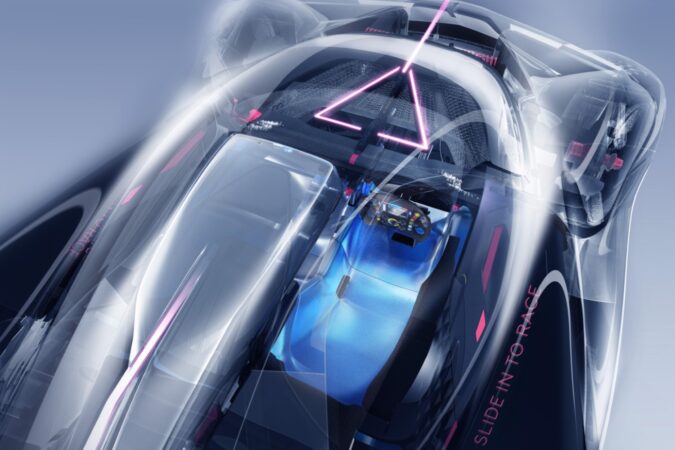With the future of internal combustion engines up in the air, carmakers continue to showcase that electrification isn’t necessarily the end all, be all. There are synthetic fuels, and for Alpine, it looks like hydrogen fuel cells may be the ace up their sleeves. So, this coming May and June, you’ll be seeing a lot of Alpine’s latest Alpenglow Hy4 rolling lab out on track. It’ll first head to Spa-Francorchamps for the TotalEnergies 6 Hours of Spa, before then heading to the 92nd run of the 24 Hours of Le Mans in mid-June. It’ll mostly be demonstration runs rather than races.
Nevertheless, seeing more and more hydrogen race cars (such as those from Toyota) gives me hope that the future of racing will still have aspirational, loud, racy engines, rather than just a gentle hum of an electric motor. Alpine’s Alpenglow Hy4 aims to showcase, on a race track, no less, that sustainability is indeed possible within the excitement, thrills, and performance that you’d ideally need in racing. It’s a pretty neat alternative to help decarbonise motor racing, in addition to possibly trickling all that tech and experience down to road-going sports cars.
Looks Like A Race Car, Sounds Like A Race Car
Alpine made it clear that with the Alpenglow Hy4, it’s function over form. Made atop a carbon monocoque and designed like an LMP3 car, the Alpenglow Hy4 echoes the historic race cars of Alpine past. You might be able to see a bit of the Alpine A424, which is currently competing in the Hypercar class of the World Endurance Championship (WEC). Although, unlike a Hypercar, the Alpenglow Hy4 has an enlarged interior that’ll comfortably fit two seats. All the while, it’ll still have room for the hydrogen tanks hidden in the Hy4’s side pods and behind the cockpit.
It’s low, wide, and very long. You might even see some of the iconic Alpine A220 of the late 60s with that long-tail rear-end on the Alpenglow Hy4. With otherworldly speeds to control, Alpine had to massively redesign the front splitter and aerodynamic bits on the Alpenglow Hy4. Those low NACA air intakes on the front-end houses both the oil and coolant radiators, with a snorkel on the rear of the cockpit that’s reminiscent of a proper race car. Additionally, to keep the back of the Alpenglow Hy4 somewhat grounded, a low, transparent rear spoiler can be seen here.
Hydrogen Power Made For Winning Races
Moreover, there’s the secret sauce that makes the Alpine Alpenglow Hy4 unique; hydrogen. It’s in the name too – ‘Hy’ for hydrogen, and ‘4’ for four cylinders. Within the Alpenglow Hy4, below that carbon fibre bonnet, is a bespoke 2.0-litre, inline-4, turbocharged experimental engine. It’s good for around 340bhp and a top speed of 270km/h; not bad for a test engine. It’s then paired with a sequential gearbox and a centrifugal clutch, just as that peppy little engine revs to 7,000RPM. And hey, if this works out, Alpine is keen to swap this out for an all-new V6 engine, too.
For now though, there are a lot of challenges at hand as Alpine tries to adapt hydrogen. Or, to be specific, the Alpenglow Hy4 is powered by H2 dihydrogen, courtesy of three hydrogen tanks that feed at superbly high pressures; up to 700 bars. That hydrogen is then fed into the engine in gas form, which faces hurdles like avoiding abnormal combustion or controlling high temps in the combustion chamber. All in all, you’re looking at pretty much negligible CO2 emissions, with no soot, no CO, and no unburnt hydrocarbons, with ridiculously low NOx emissions, too!







